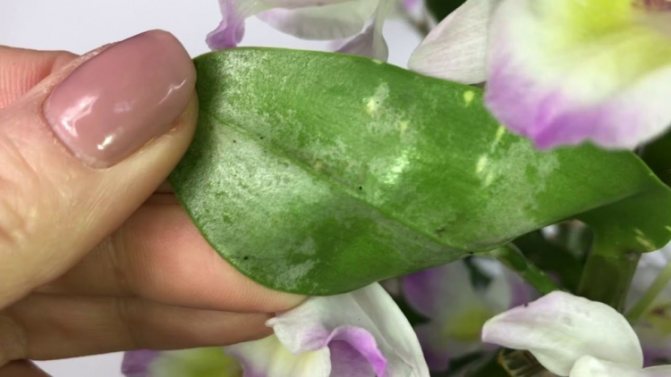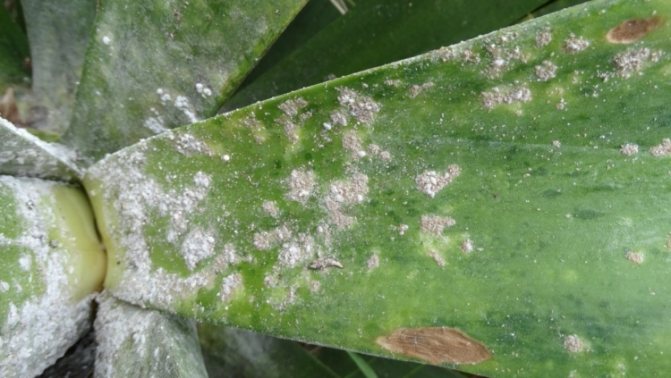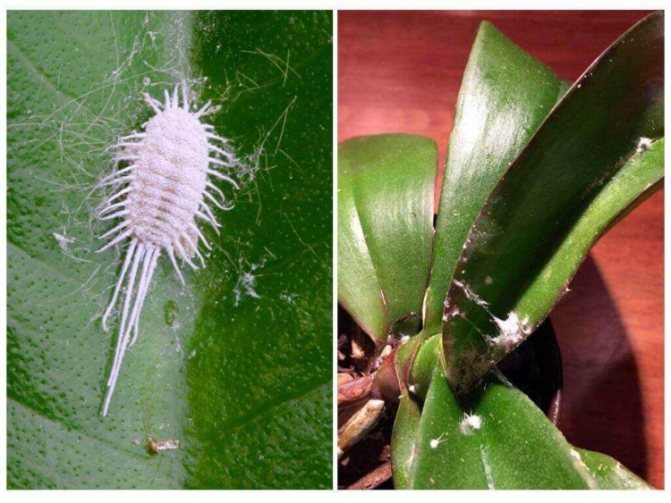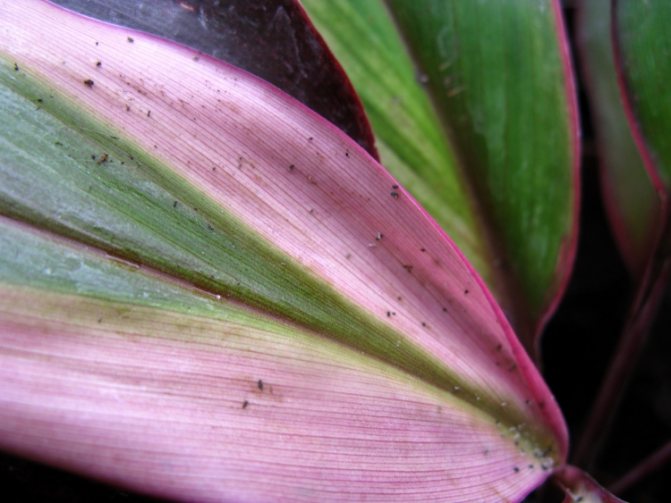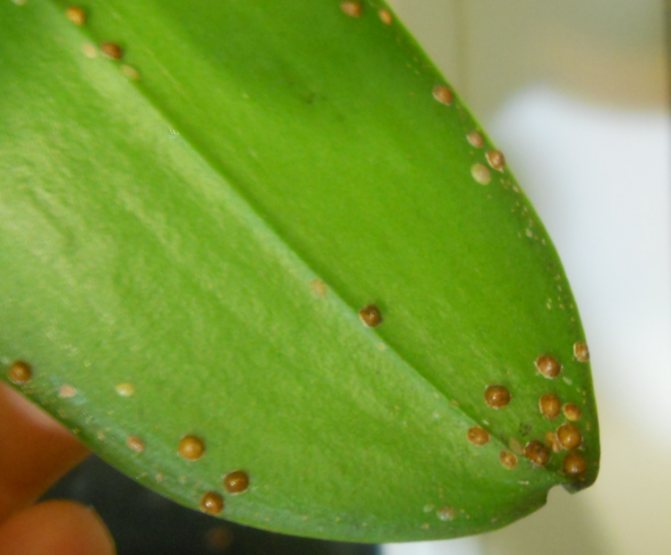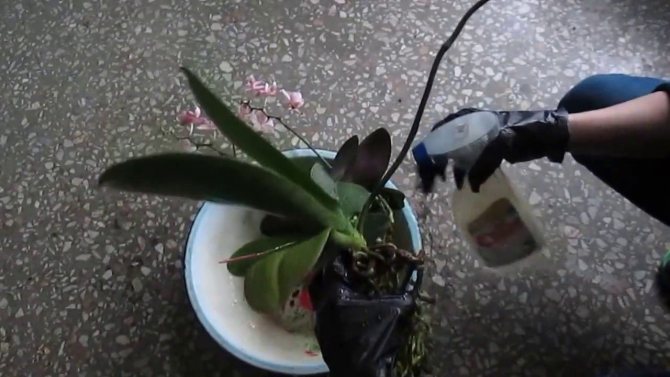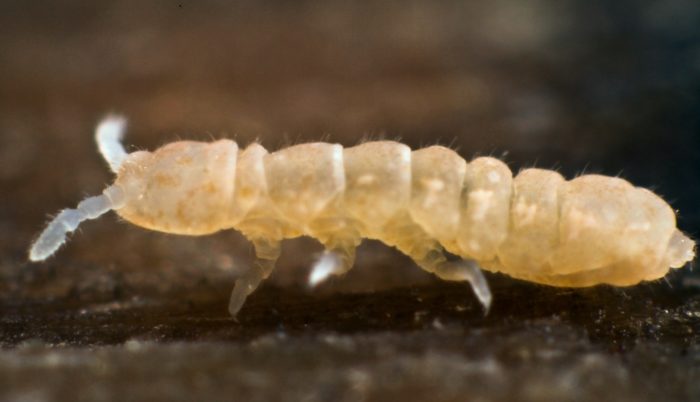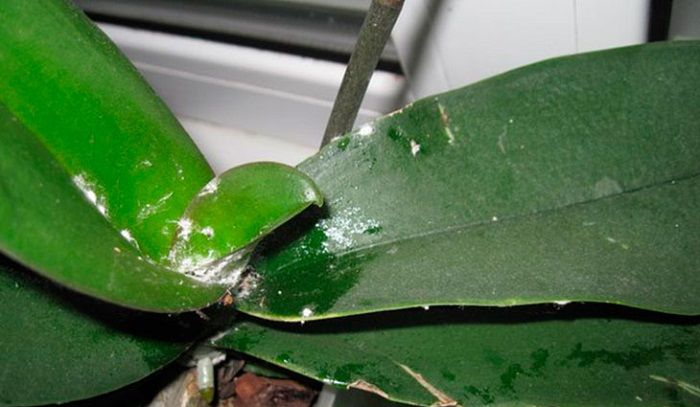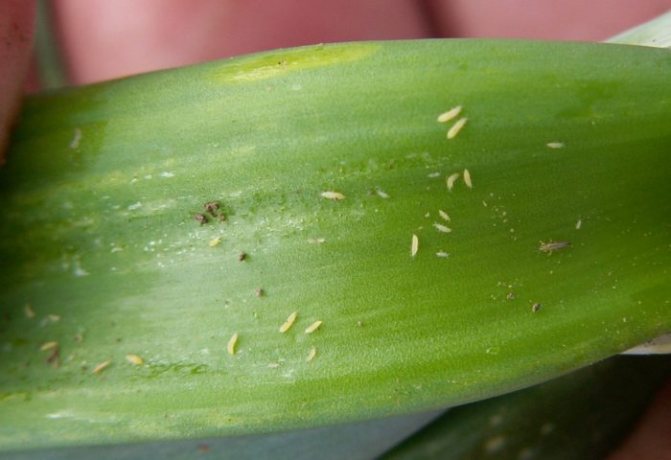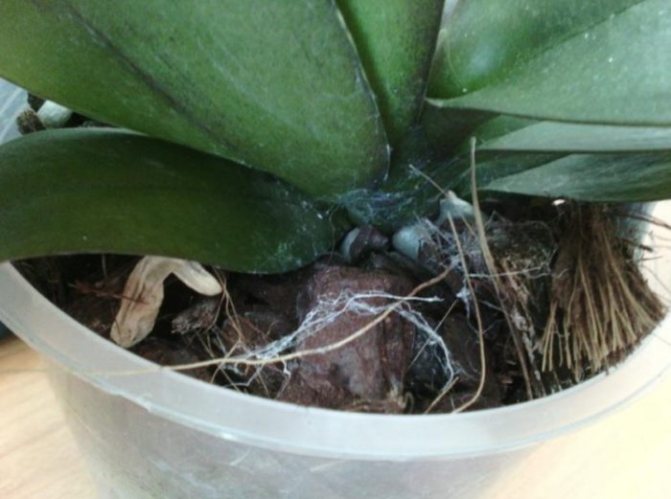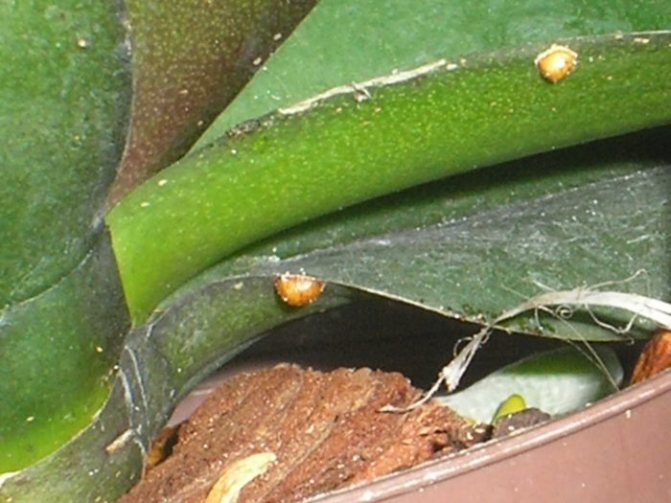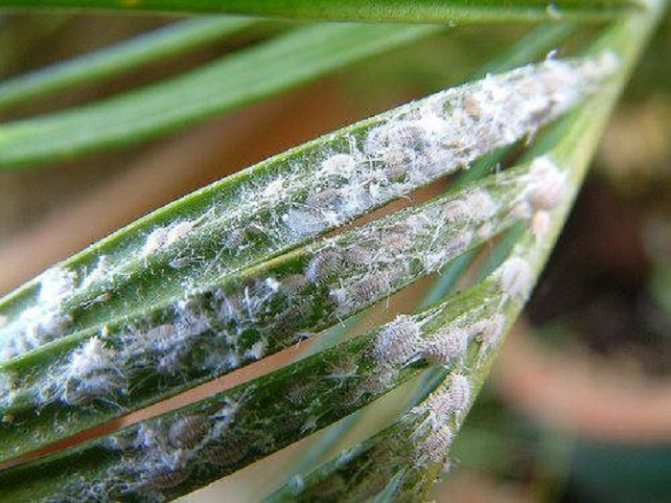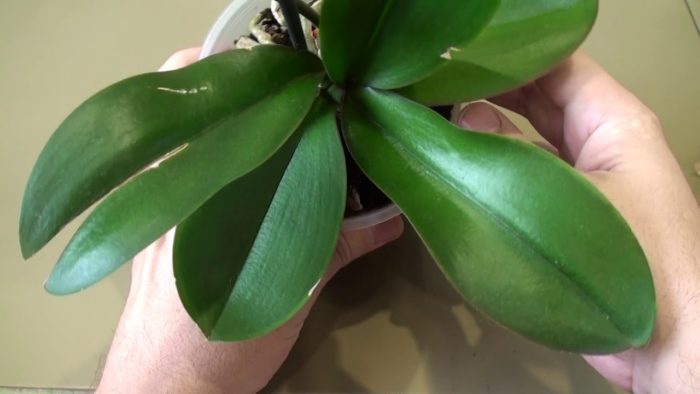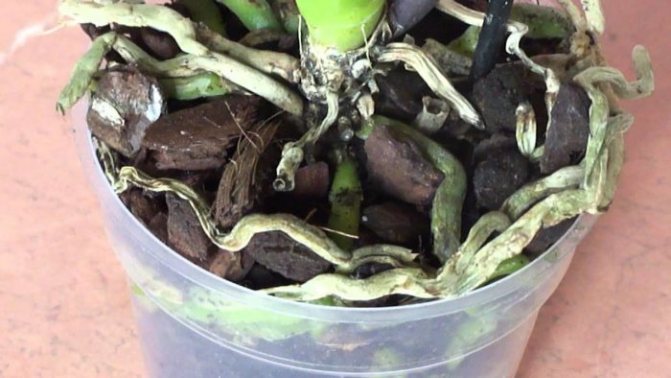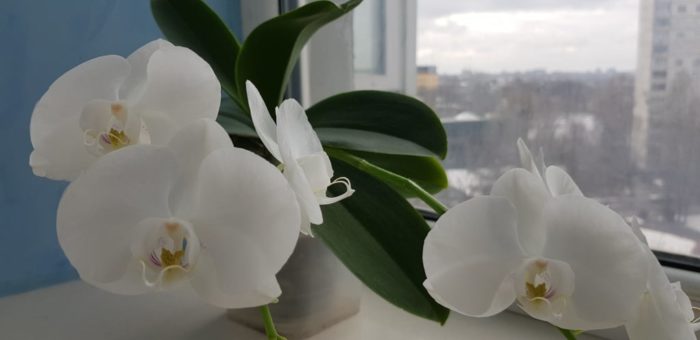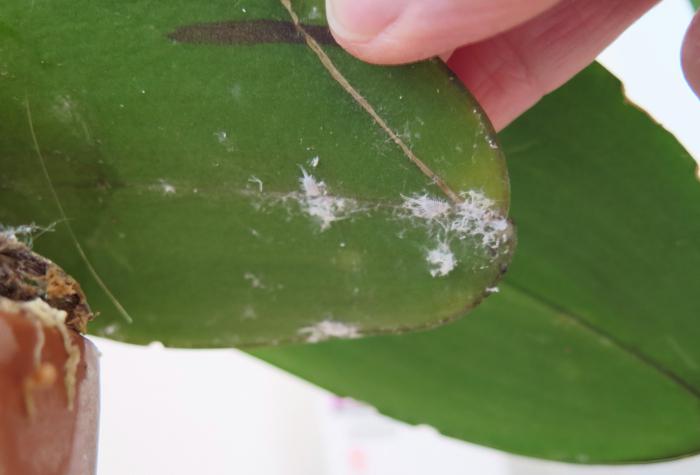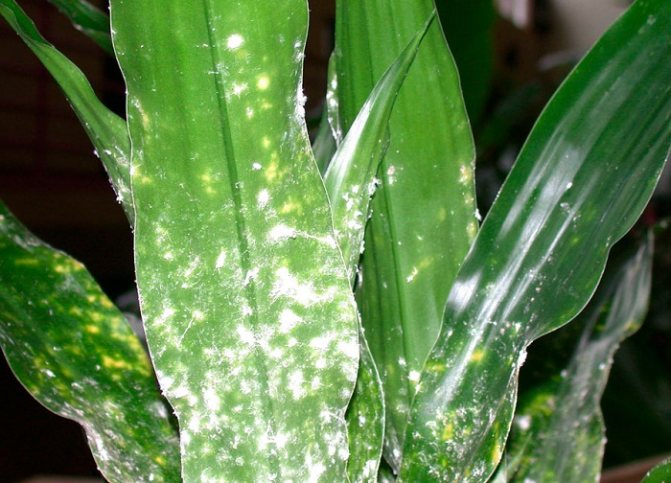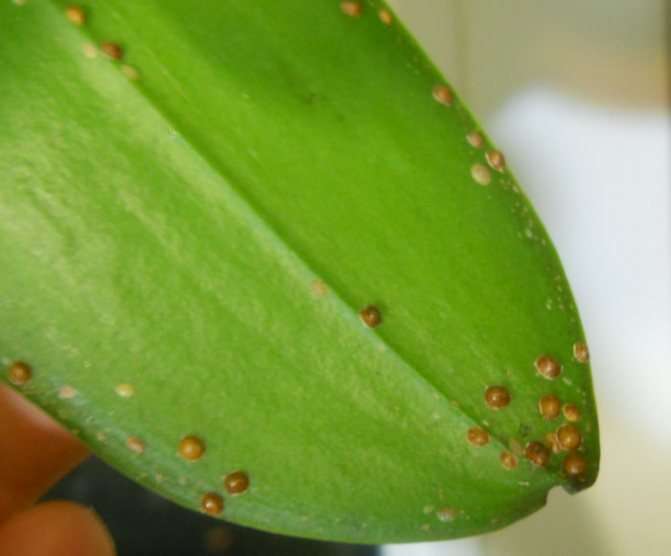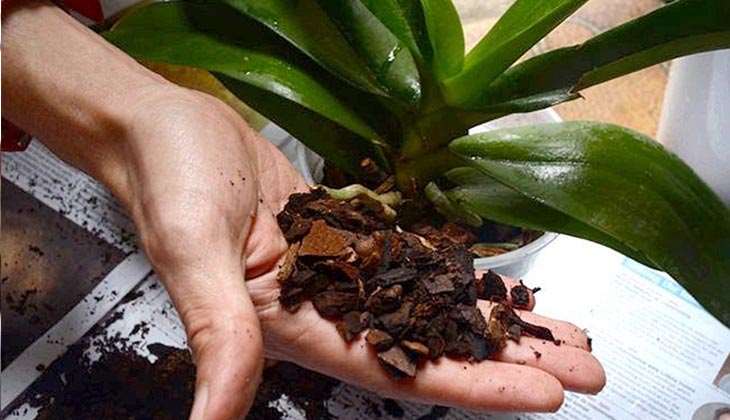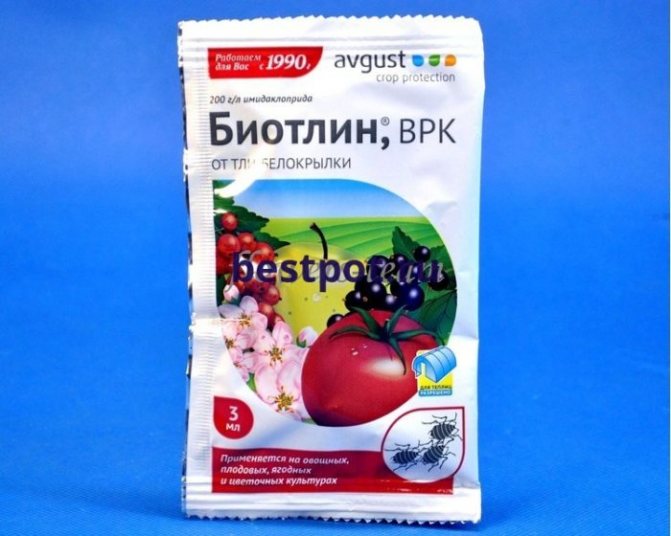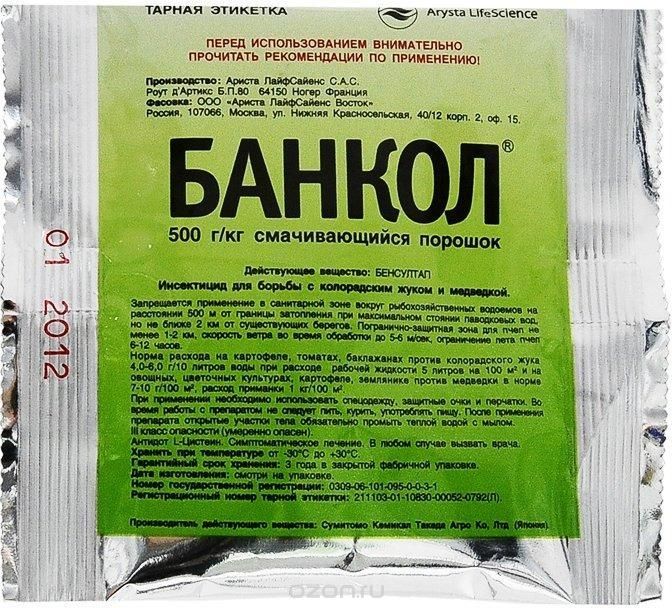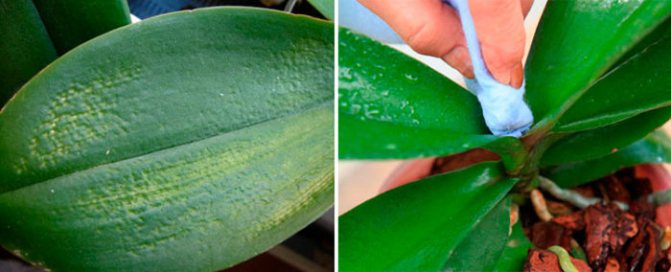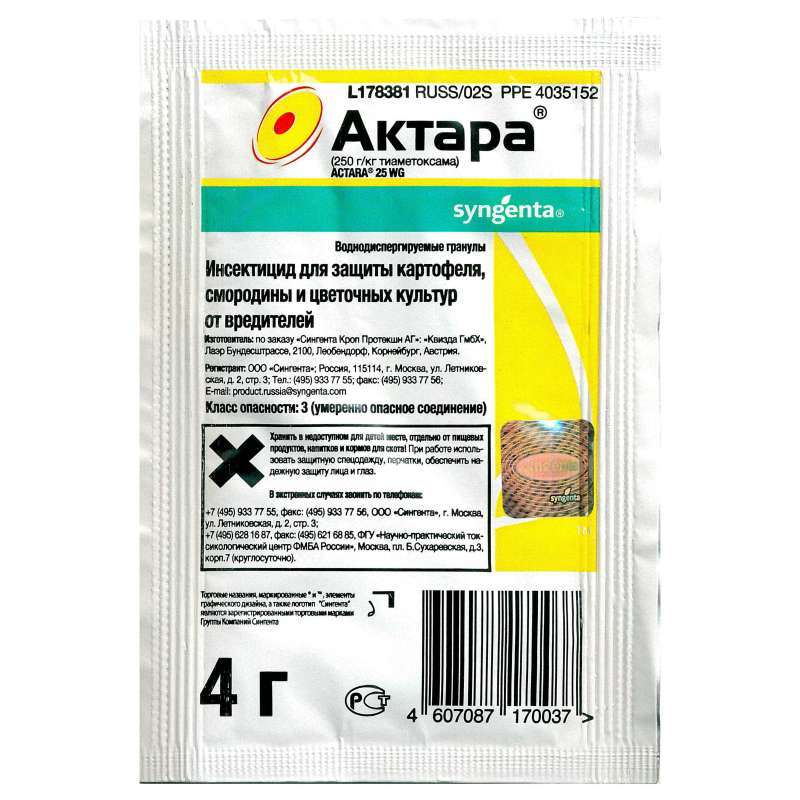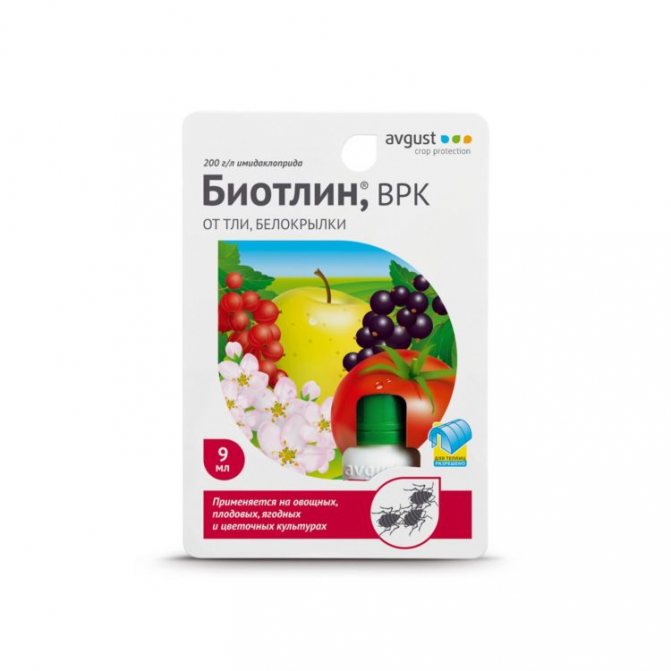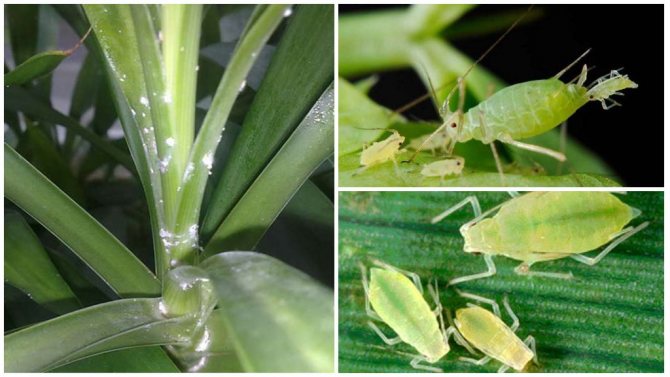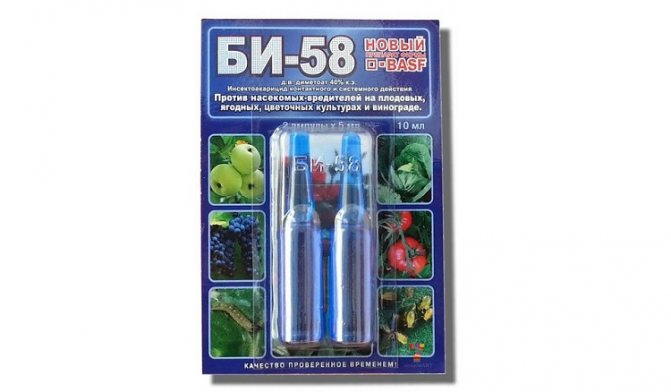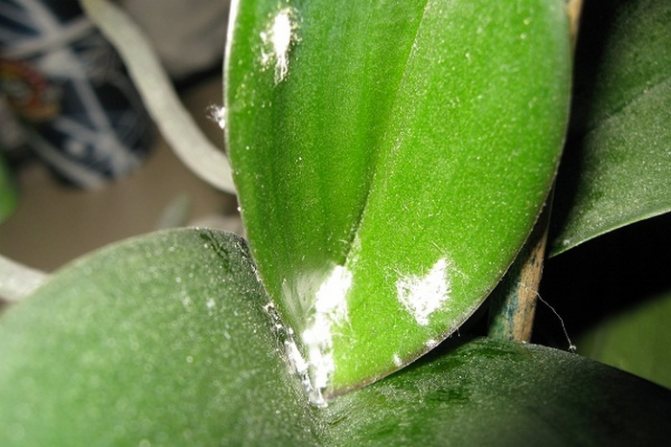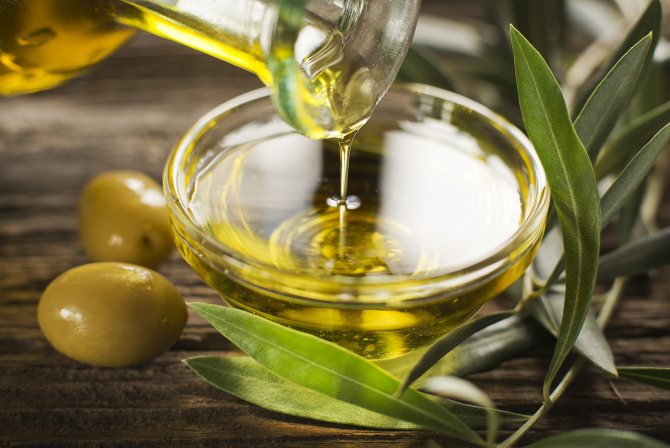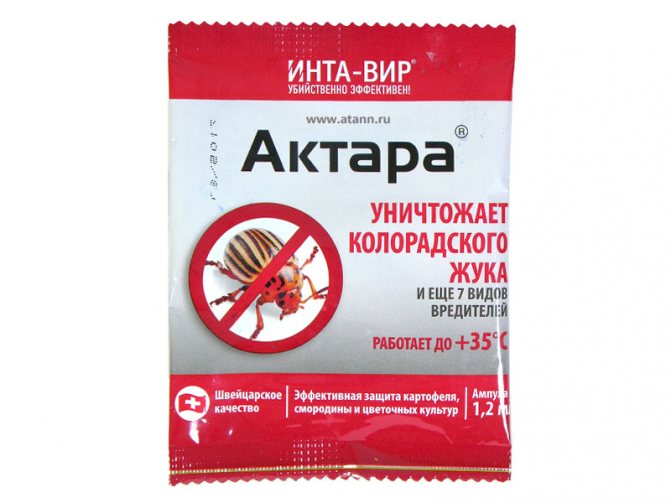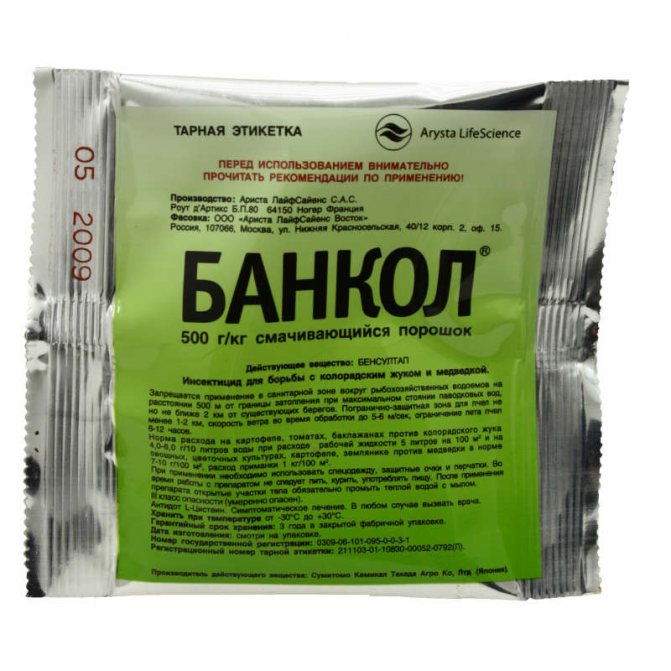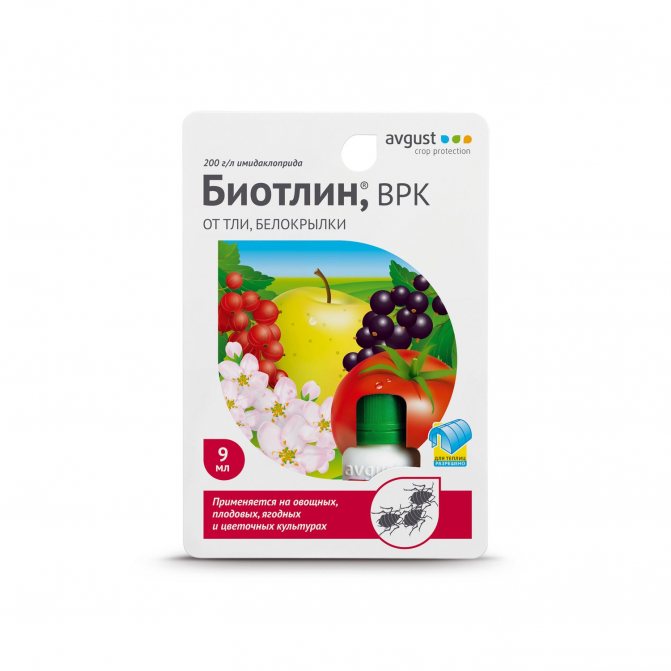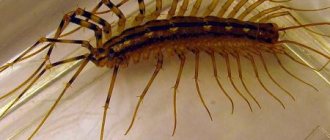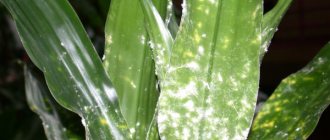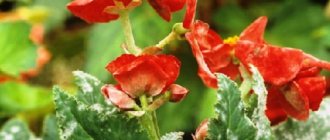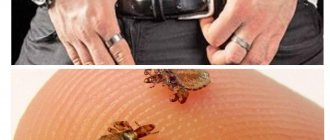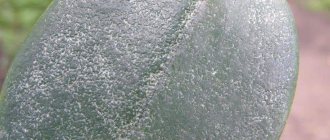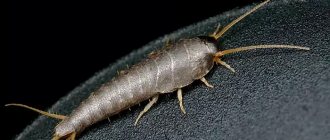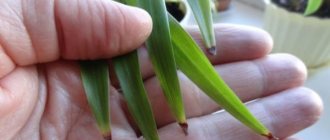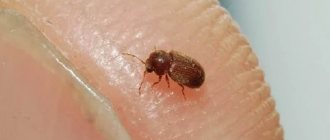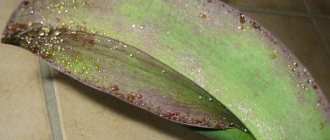Indoor orchid species sometimes infect various harmful insects. White pests are best seen on these plants. All of them are small, so inexperienced growers mistake them for white and fluffy bugs.
In fact, these are different types of insects that can cause irreparable damage to the orchid or be practically harmless. It is important to know why white fluffy (shaggy) bugs appeared in the soil and on orchid leaves and how to get rid of them in order to protect the plant.
Appearance and photos
Each of the types of pests leaves signs of their vital activity, by which the parasite can be identified.
Pests
Thrips
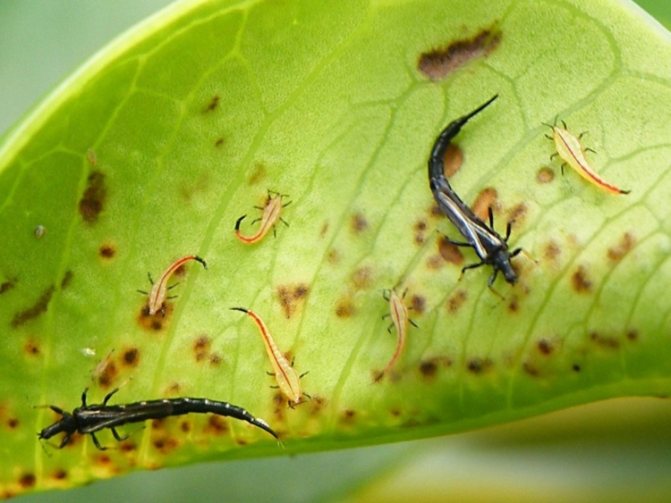
They are very small in size. These are dark bugs up to 2.5 mm in size... Upon closer examination, you can see two pairs of wings on the back. They usually hide in the substrate, where it is not easy to identify them.
Shield


The presence of scale insects is immediately visible - brown or yellowish tubercles appear on clean leaves. Insects are quite "impressive" in size - adults reach 5 mm in length.
The females of the parasites are absolutely motionless, and the males can fly thanks to their two front wings. The scutellum has a translucent carapace covering its body.
Puffs
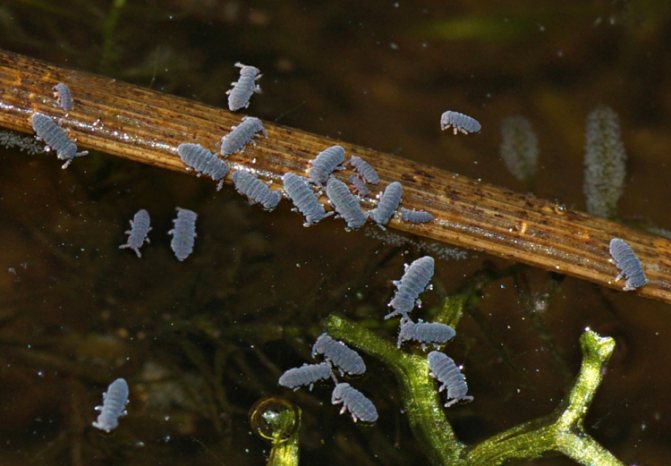

Parasites up to 3 mm. greenish, gray or gray-brown in length... Insects move pretty fast - they can even jump.
Spider mite
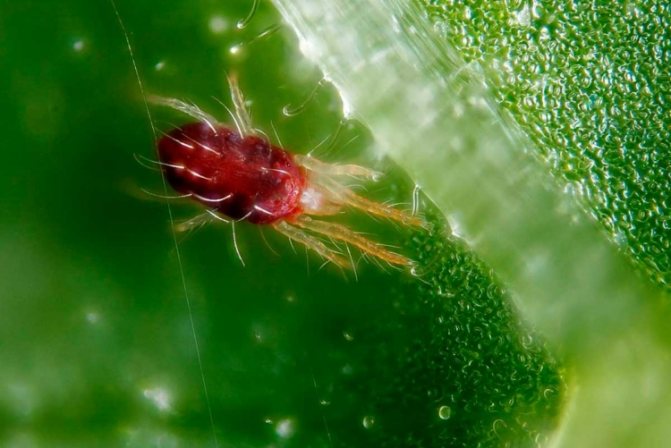

It is quite difficult to see a tick with the naked eye, but with the help of a magnifying glass in the cobweb you can see an insect of yellow or red color. The larvae of the bug have the same bright color.
Mealybug
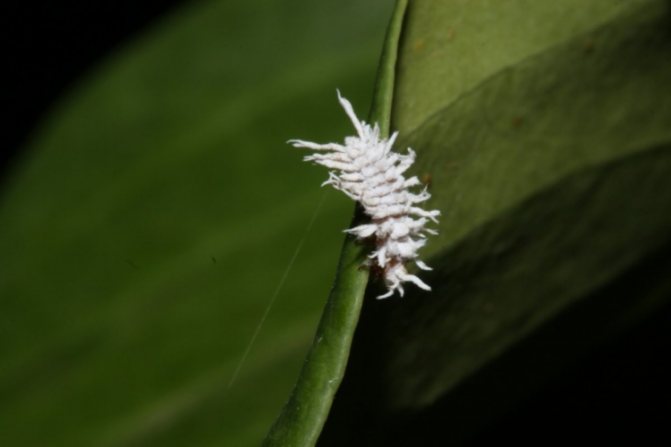

Mealybug, which is small in size, is not easy to spot... Its presence on the plant is betrayed by shaggy white balls. Both adults and their larvae hide under this cover.
The adult insect is pink or white in color, sometimes light brown specimens are found. The size of the bug is up to 5 mm.
Affected leaves and stems
It is not easy to identify parasites on an orchid due to their small size. But thanks to the obvious signs of damage to the plant, the species of insects can be quickly identified and started to fight them.
- If grooves appear on the leaves in the form of strokes, and black dots (insect excrement) are visible everywhere on the plant, then it is necessary to urgently begin the destruction of thrips.
- When a spider mite appears, the leaves of the orchid become covered with black dots, which are the results of insect punctures. Subsequently, the leaves brighten, dry out.
- A shaggy white bloom on some areas of orchid leaves is a characteristic sign of the appearance of a mealybug. Parasites feed on the sap of the flower, reducing the ability to photosynthesis and causing disruption of gas exchange processes.
- Brownish tubercles on the leaves and stem of the orchid indicate the appearance of the scale insect, which lives by feeding on the plant's cell sap. First of all, the scabbard settles on the back of the leaf, then moving to the root zone, stem, inflorescences. As the tubercle grows, the processes of photosynthesis in the leaf are disrupted, and parts of the plant begin to die.
This is how the affected leaves look:
Reasons for the appearance of parasites on an orchid
On the orchid on the leaves, drops are the reasons
For a healthy plant, mealybug is not dangerous. He attacks weakened specimens.
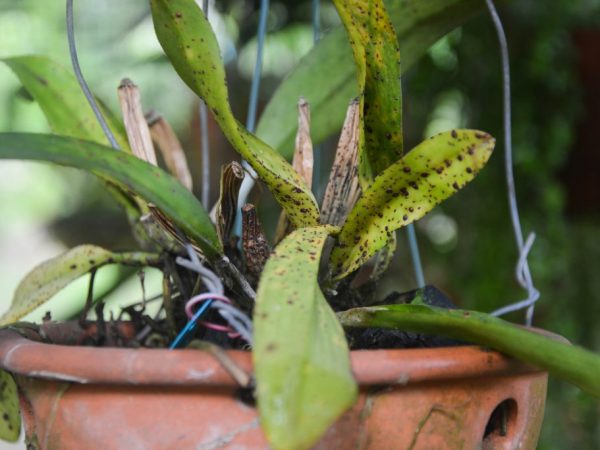

Affected plant
There are several reasons for the decrease in orchid immunity:
- insufficient lighting;
- poor watering;
- low humidity level;
- fertilizer abuse.
Such violations of the rules of care lead to a change in the composition of the cell sap. Low nutrition (or excessive) prevents the plant from developing normally.
Need to remember! The optimum temperature for the life of the worm is about 25 ° C. This means that thermophilic varieties of phalaenopsis are at greatest risk.
Why can they start in the ground, on roots and leaves?
Pests in a flower garden do not appear by themselves - parasite infestation occurs for several reasons. Experienced flower growers include:
- systematic overflow;
- poor quality substrate;
- infection from other indoor plants;
- purchase of a plant with parasites.
Source of infection
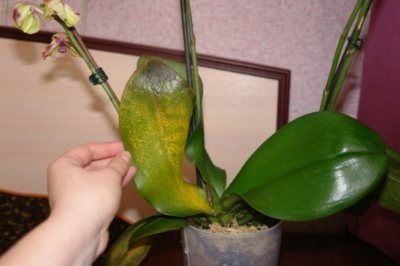

If the plant has not been transplanted recently, and new flowers have not appeared in the house, then flaws in the care are the cause of the appearance of bugs.
Stagnant water leads to rotting of the bark, in which parasites easily start... In the bark of a pine tree, which flower growers like to use as a soil for orchids, various bugs live in natural conditions.
Such a neighborhood is invisible for a tree, but for a phalaenopsis or dendrobium it can become destructive. It is better to use a special filler, which includes not only the bark, but also:
- charcoal;
- moss;
- coconut fiber.
The finished substrate has good moisture holding capacity and the required air permeability.
Many gardeners like to plant indoor flowers in an open front garden in the spring. Together with nutrients, Kalanchoe or geranium are quite capable of "picking up" scale insects or aphids. In the fall, this living creature will be in the indoor flower garden. Similarly, you can bring bugs with a purchased copy.
Prophylaxis


All plants need to be examined regularly, especially carefully - young shoots and leaves, buds and flowers, since it is these parts that most attract the mealybug.
It is also important to observe proper orchid care - you need to monitor the temperature, humidity and ensure proper watering. Particular attention should be paid to orchids in winter.
Often, beetles enter the house with a new plant. To avoid this problem, you should carefully examine the green pet before purchasing. If it is not easy to notice small bugs in the peduncles and the core of the orchid, then it is impossible to find them in the ground, so at home the pot with the newly purchased orchid should be immersed in a bowl of water for five minutes. The water should almost cover the surface of the substrate. After a specified time, the pests, if any, will get out of the soil. It also makes sense to quarantine each new plant for a month.
How can you not fight?
You need to start pest control at the first signs of their appearance.
- Dry air promotes the rapid reproduction of parasites, so some growers begin to regularly spray orchids in the hope of raising the humidity to the required level and getting rid of bugs. This method is dangerous because insects get additional time for reproduction and development.
- It is believed that ultraviolet radiation can destroy pests. This is one of the most common myths. You can really get rid of insects with biological, chemical preparations or folk remedies.
What should i avoid when dealing with insects?
If you notice that the condition of your plant has deteriorated, then you should not panic and take on all the methods at once. Clearly identify the problem by symptoms and correctly approach the treatment... Timely intervention will definitely help save the life of your flower. Do not overuse with various types of chemicals, because the orchid is a delicate flower.
There is no need to experiment with different methods of struggle, if one specific remedy is chosen, then it should be used to the end.
Home treatments: how to get rid of?
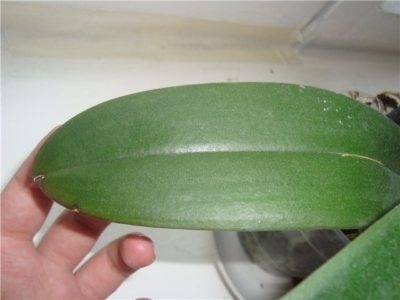

At the first sign of an orchid infection, it must be isolated from other flowers.... After that, the degree of infestation of the flower is assessed, a method of combating insects is selected. Before any treatment, mechanical removal is carried out:
- pests;
- traces of their vital activity;
- as well as sluggish leaves and shoots.
If there is a suspicion of contamination of the substrate, it should be thoroughly spilled with water or replaced. Then it is worth starting treatment.
From thin white hairy
You can get rid of the mealybug using folk methods:
- One way is to spray the flower with a solution of water and olive oil.... Two tablespoons of oil are introduced into two liters of water and the infected specimen is sprayed twice a day.
- For another way to deal with bugs, you need garlic... Half the head of the root crop is crushed, poured with half a liter of boiling water and infused for 4 hours. The tincture is used to wipe the leaves and stem of the orchid.
- You can also spray with water infused with orange peels.... To do this, pour 50 grams of boiling water in a liter. crusts and withstand the infusion for a day.
- And another method that has shown its effectiveness is the treatment of the orchid with a soap-alcohol solution... To get a remedy for parasites, you need to rub laundry soap (1 tbsp. Spoon) in a liter of water. Then add 15 ml to the solution. ethyl alcohol and mix thoroughly. The plant is treated three times a week after preliminary mechanical cleaning of the flower from bugs.
The biological method of control is the use of insects that eat the mealybug. These include larvae:
- gummy fly;
- common gold-domed;
- riders.
If there are too many bugs, then it is better to prefer chemical treatment to folk methods.
They do an excellent job with the worm:
- "Bankol".
- "Confidor".
- Aktara and others.
Plants need to be processed three times to completely destroy insects. Re-treatment is carried out 10 and 20 days after the first spraying.
From the little blacks
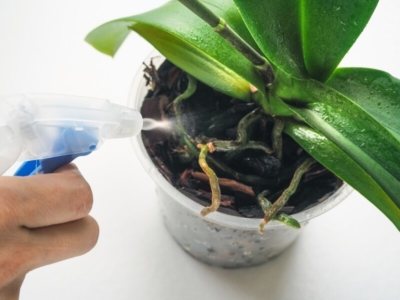

Traditional methods are used to combat thrips.:
- Turpentine and minced garlic are placed in a bag with an infected orchid for three to four hours.
- You can spray the leaves and stem of the flower with tincture of medicinal dandelion or tagetis. The flowers of plants are poured with boiling water and insisted (tagetis - up to two days, and dandelion is enough to insist for three hours).
As a biological method, specially bred bugs and ticks are used, which eat pest larvae. This method does not guarantee complete elimination of parasites, because adult bugs (which ticks and bugs do not feed on) continue to lay eggs.
In case of significant infection, it is better to use chemicals.:
- "Phosphamide", "Rogor" in the form of sprays.
- "Aktara" (granules).
- "Actellikt" (emulsion).
Whitefly
Pests are small white butterflies that can fly quickly and hide among any parts of the plant, even in the bark. When the hand touches an orchid or soil, butterflies fly up quickly. They prefer to sit on dense leathery leaves. Oviposites are placed under the bark, the lower edges of the leaf plates. They hatch white and yellow larvae, which, like butterflies, feed on plant sap.
White-yellow stains remain on the leaf plates from the actions of the pest, and sweet nectar remains in the biting places. The fight against whitefly consists of hanging sticky fly sticks indoors. Damaged orchids should be washed with soapy water in a ratio of 1: 6; you can wipe all green parts with a soapy sponge.
The flower itself and the soil under it must be sprayed with Aktellik, then repeat the treatment after 7-8 days. For prevention, it is recommended to increase the humidity of the air, regularly wipe the leaves (once every 5 days), spill the soil with a stream of water every month.
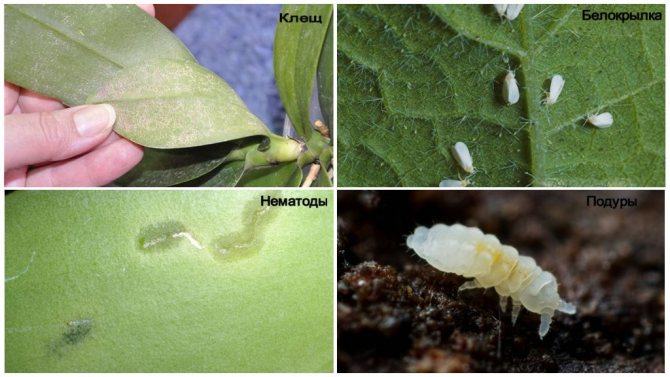

Orchid pests
What to do to prevent the plant from getting sick again?
- To prevent infection with parasites, newly acquired or returned flowers from the dacha will be quarantined for two weeks. At this time, the plants should be kept in a separate room from the main flower garden under close scrutiny.
- To prevent infection, it is necessary to select the correct watering regime so that the substrate has time to dry out between operations, and to carry out regular spraying, increasing the humidity of the air.
- When transplanting an orchid, it is better to use a high-quality substrate from a well-known manufacturer, and when using the bark, it must be heat treated.
In order to prevent bugs from appearing on orchids, it is necessary to systematically conduct a preventive examination. Such an event will allow you to detect the problem in time, apply the most gentle methods of dealing with parasites and prevent infection of the entire flower garden.
Possible pest locations
The worm settles where there is food for it: these are juicy leaves, young flower stalks, buds. The latter, if damaged by a pest, are best cut off and disposed of.
Orchid leaves spots - what to do
It is possible to create conditions for the flower when all the bugs themselves will crawl out onto the leaves. To do this, they are placed in a bathroom at high temperatures (30 ° C and above) and high humidity.
On orchid leaves
Pests often settle on orchid leaves. They like succulent large leaf plates. If necessary (laying eggs, direct sunlight, excessive dry air), they urgently move into the leaf sinuses, under the scales of dried leaves. Therefore, when buying, you may not notice the hidden pests.
Important! The purchased flower must be quarantined.
In the ground
For all types of ticks, scale insects, wood lice and the like, the soil is one of the favorite habitats. Complicating the situation is the fact that you can notice their presence when it is too late to save the plant.
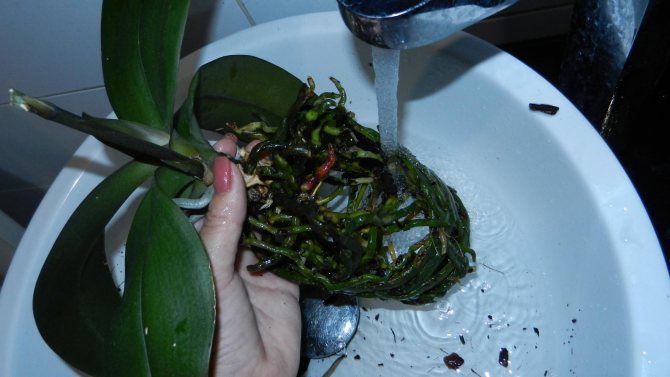

Root rinsing
What to do if white bugs are bred in the soil of an orchid? You can try to save him only by transplanting to new soil. Only first should the roots be completely freed from the ground and treated with an insecticide. Or at least hold it in a bright pink solution of manganese.
"Aktellik", "Fitoverm"
These preparations, when treated for white bugs, are used to spray the upper part of the orchid. Their use is especially important in the fight against mealybugs, since watering with Aktara alone will not be enough.
For spraying, it is necessary to dilute 2 ml of "Actellika" or "Fitoverma" in 0.5 liters of water. In case of mass accumulation of pests, it is necessary to additionally wipe the sinuses of the leaf plates with a cotton pad moistened with a working solution. Repeat the entire treatment procedure with an interval of 1 week.
When choosing a product, it should be borne in mind that Actellik has a stronger effect, but has a strongly pronounced unpleasant odor. Therefore, spraying should be carried out on the balcony or outdoors.
Fitoverm is distinguished by a more gentle action and practically does not have a smell, therefore, it can be used at home with further ventilation of the room at the end of the procedure.
Folk remedies
At the initial stage of infection, you do not need to resort to the help of chemicals. With a small number of pests, folk remedies can be used.
The most effective:
- Garlic tincture. Measure out 500 ml of boiled water. Chop 6 cloves of garlic separately. Add the resulting mass to water, mix.Insist the product for 5 hours, clean it from impurities and spray the plants.
- Alcohol solution. Grate with pine soap - 15 g. Measure out 10 ml of alcohol or 20 ml of vodka. Pour 1 liter of water over both components. Wait until the soap dissolves and the solution becomes cloudy. After that, use a means for wiping the affected areas, and after a day, the treated areas should be washed with water. Repeat the procedure every 3 days until the signs of pests disappear.
- Oil solution. Dissolve 30 ml of olive oil in 0.5 l of water. Shake up and use for processing.
- Infusion of horsetail. Pour 100 g of the plant with boiling water in a volume of 1 liter, leave for 2 hours, drain. Apply the infusion for spraying.
Root worm
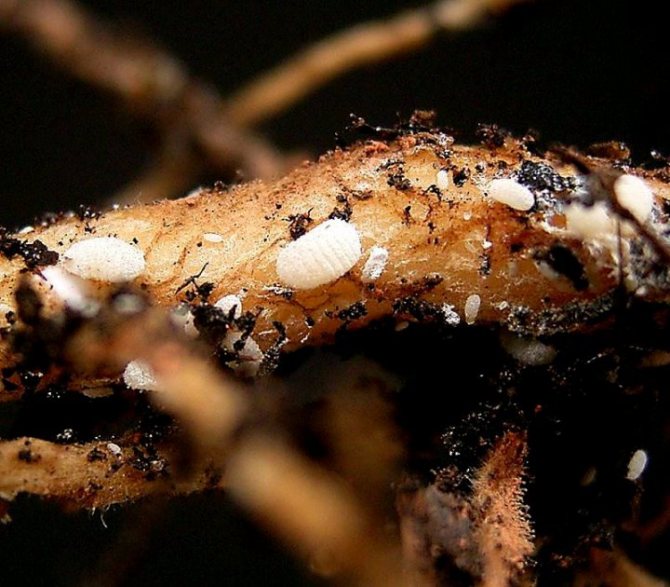

This pest is one of the most dangerous for all plants. It is considered a close relative of the mealybug, but in the process of evolution, it preferred an underground lifestyle.
The pest is an insect with a body size of 1-2 mm. Therefore, with a small number, it is difficult to find it. The rootworm prefers to feed on the roots of the plant. For the most part, it is localized in the center of the earthen coma, but in a small amount it can also be found on the root collar, crawling 5-10 mm above the soil level.
The danger of the pest is that it not only sucks the nutritious juice from the roots, but also injects specific substances into the plant tissues, which completely change metabolic processes in the tissues, which leads to a depressed plant state. To detect white bugs in the ground, orchids must be regularly inspected and, at the first sign, start a fight.

